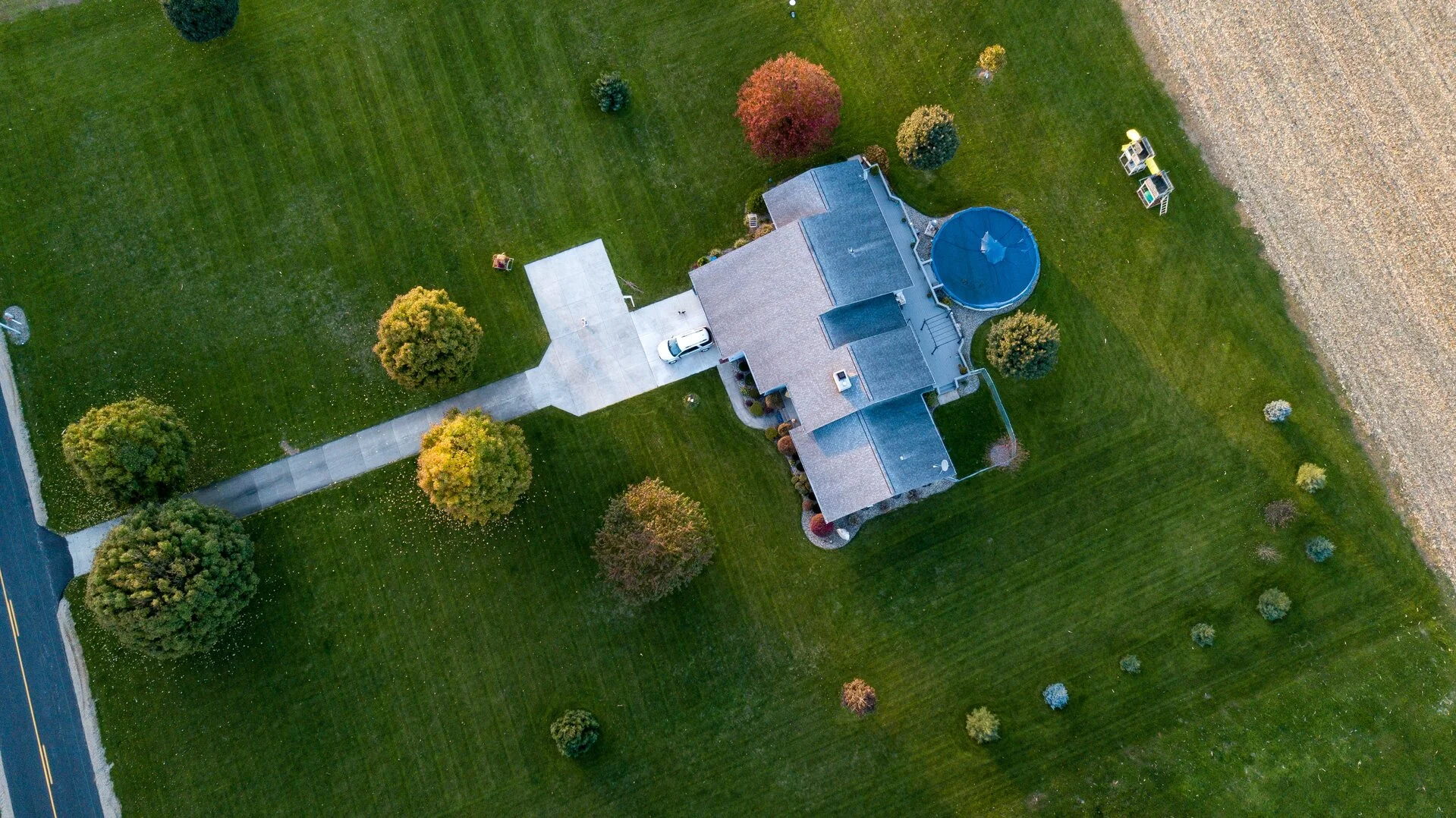
A Beginner’s Guide to Lawn Care


If you are new to lawn care, you might feel overwhelmed by the amount of work and knowledge required to keep your grass green and healthy. But don’t worry, lawn care is not rocket science. With some basic tips and tools, you can transform your yard into a beautiful and inviting space. Here is a beginner’s guide to lawn care that covers the essentials of soil, grass, watering, mowing, fertilizing, weeding, and more.
Learn about your soil
Healthy soil is the foundation of a strong, healthy lawn. Soil provides nutrients, water, and air to the grass roots, so it is important to know what kind of soil you have and how to improve it. A soil test can reveal many details about your soil, such as its pH level, fertility level, organic matter percentage, and texture. You can get a soil test kit from a garden center or online, or send a sample to a laboratory for more accurate results.
A soil test can help you determine what kind of amendments or fertilizers you need to add to your soil to make it more suitable for grass growth. For example, if your soil is too acidic, you may need to add lime to raise the pH level. If your soil is too sandy, you may need to add compost or organic matter to improve its water retention and nutrient availability.
Know your grass
Knowing the type of grass you have is crucial because it will determine what kind of care is best for it. Grasses are divided into two main categories: cool-season and warm-season. Cool-season grasses grow best in regions with cold winters and mild summers, such as the northern half of the U.S and South-Eastern Canada (particularly in Ottawa and Toronto regions). Warm-season grasses grow best in regions with hot summers and mild winters, such as the southern half the U.S.
Some common cool-season grasses are Kentucky bluegrass, perennial ryegrass, fine fescue, and tall fescue. Some common warm-season grasses are Bermuda grass, zoysia grass, St. Augustine grass, and centipede grass.
Different types of grasses have different preferences for mowing height, watering frequency, fertilizing schedule, and weed control methods. For example, cool-season grasses need more water and fertilizer in the spring and fall, while warm-season grasses need more water and fertilizer in the summer. Cool-season grasses should be mowed higher than warm-season grasses to protect them from heat stress and drought.
Water your lawn
Watering your lawn is essential for keeping it green and healthy. Water helps the grass roots absorb nutrients from the soil and prevents them from drying out. However, watering too much or too little can also harm your lawn. Overwatering can cause fungal diseases, root rot, and weed growth. Underwatering can cause drought stress, wilting, browning, and thinning.
The best way to water your lawn is to follow the “deep and infrequent” rule. This means that you should water your lawn deeply enough to moisten the top six inches of the soil (where most of the grass roots are) but not so often that the soil stays wet all the time. A good rule of thumb is to water your lawn once or twice a week (depending on the weather and soil type) for about an inch of water each time.
You can use a rain gauge or a tuna can to measure how much water you are applying to your lawn. Place them in different spots on your lawn and check how long it takes to fill up with an inch of water. That’s how long you should run your sprinklers or hose for each watering session.
The best time to water your lawn is in the early morning (before 10 a.m.), when the temperature is cooler and the wind is calmer. This reduces water loss due to evaporation and allows the grass blades to dry off before nightfall (which prevents fungal diseases).
Mow at the right height
Mowing your lawn is not only for aesthetic purposes but also for health reasons. Mowing helps control weeds, improve air circulation, stimulate growth, and prevent diseases. However, mowing too high or too low can also damage your lawn. Mowing too high can cause thatch buildup (a layer of dead grass clippings that blocks water and air from reaching the soil) and make your lawn more susceptible to pests and diseases. Mowing too low can stress your grass by exposing its roots to heat and drought.
The ideal mowing height depends on the type of grass you have and the season. Generally, you should never cut more than one-third of the grass blade length at a time. This means you should adjust your mower height according to how fast your grass grows. For example, if your grass grows an inch per week, you should mow it every week to keep it three inches tall.
You can use a ruler or a tape measure to check your mower height before mowing. You can also use a grass height chart to find the recommended mowing height for your grass type. For example, Kentucky bluegrass should be mowed between 2.5 and 3.5 inches, while Bermuda grass should be mowed between 0.5 and 1.5 inches.
Feed your lawn
Fertilizing your lawn is another crucial step to keep it green and healthy. Fertilizer provides essential nutrients to the grass that may not be available in the soil, such as nitrogen, phosphorus, and potassium. These nutrients help the grass grow faster and thicker, improving its colour, disease resistance, and stress tolerance.
However, fertilizing too much or too little can also harm your lawn. Overfertilizing can cause excessive growth, which requires more water and mowing, and increases the risk of pests and diseases. Underfertilizing can cause nutrient deficiencies, leading to poor growth, thinning, yellowing, and weed invasion.
The best way to fertilize your lawn is to follow the fertilizer label or package instructions. You should also use a fertilizer spreader to apply the fertilizer evenly and avoid burning or missing spots. You should also water your lawn after fertilizing to help the fertilizer dissolve and reach the soil.
The best time to fertilize your lawn depends on the grass you have and the fertilizer you use. Generally, cool-season grasses need more fertilizer in the spring and fall, while warm-season grasses need more fertilizer in the summer. You should also avoid fertilizing your lawn when it is dormant (not growing), very hot, cold, or wet.
Get rid of weeds
Weeds are unwanted plants competing with grass for space, nutrients, water, and light. They can also ruin the appearance of your lawn and make it look messy and unkempt. Some common weeds that can invade your lawn are dandelions, clover, crabgrass, nutsedge, and chickweed.
There are two main ways to get rid of weeds: mechanical and chemical. Mechanical weed control involves pulling out or digging up weeds by hand or using tools such as a hoe or a weed whacker. Chemical weed control involves using herbicides (weed killers) to kill weeds or prevent them from germinating.
The best way to get rid of weeds depends on your type and number of weeds and your preference. Mechanical weed control is more eco-friendly and safer for pets and children but can be more time-consuming and labour-intensive. Chemical weed control is more convenient and effective, but it can also be more expensive and harmful to the environment and other plants.
The best time to eliminate weeds is when they are young and actively growing. This makes them easier to pull out or kill with herbicides. You should also avoid weeding when the soil is too dry or wet, as this can damage the grassroots or spread weed seeds.
Rake leaves
Raking leaves is not only for aesthetic purposes but also for health reasons. Leaves can smother your grass by blocking sunlight, air, and water from reaching the soil. They can also create a moist, dark environment that encourages fungal diseases and pests.
The best way to rake leaves is to use a leaf rake or a leaf blower to collect them into piles or bags. You should also wear gloves and a mask to protect yourself from dust and allergens. You should rake leaves as often as needed during fall, especially after a windy day or heavy rain.
You can also use leaves as mulch or compost for your garden or flower beds. Mulch helps retain soil moisture, prevent weeds, moderate soil temperature, and add organic matter to the soil. Compost helps improve soil fertility, structure, drainage, and nutrient availability.
Hire professional lawn care services near me
Lawn care is not as complicated as it may seem. With some knowledge and tools, you can keep your grass green and healthy all year round. However, you can hire professional lawn care services if you need help or want to save time. You may want to hire professional lawn care services if you are too busy or overwhelmed by lawn care tasks. Professional lawn care services can save you time, money, and hassle by caring for all your lawn care needs, such as mowing, watering, fertilizing, weeding, raking, and more.
One of the best ways to find affordable lawn care services near you is to use Ezi Home. Ezi Home is an online platform that connects you with trusted and verified local service providers for all your home needs.
Ezi Home is not only servicing lawn care services near you but also for house cleaning services in Ottawa and Toronto or the surrounding region. If you are looking for a reliable and affordable house cleaner in Ottawa, Toronto, or the surrounding region, Ezi Home can help you find one in minutes. You can choose from various cleaning packages and add-ons, such as deep cleaning, move-in/move-out cleaning, oven cleaning, fridge cleaning, and more.
You might also like...
What Landscaping Services Can I Offer in the Winter?
Aug 1, 2023 LawncareWhat Landscaping Services Can I Offer in the Winter?
LawncareWhat Landscaping Services Can I Offer in the Winter?How To Treat a Lawn for Chinch Bugs?
May 5, 2023 LawncareHow To Treat a Lawn for Chinch Bugs?
LawncareHow To Treat a Lawn for Chinch Bugs?What Does My Lawn Need Besides Mowing?
May 28, 2023 LawncareWhat Does My Lawn Need Besides Mowing?
LawncareWhat Does My Lawn Need Besides Mowing?
